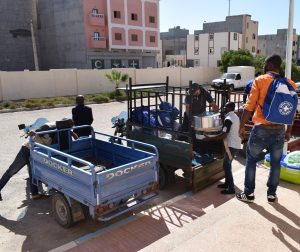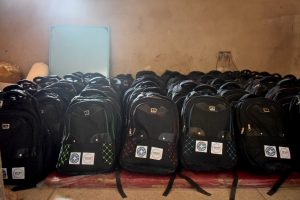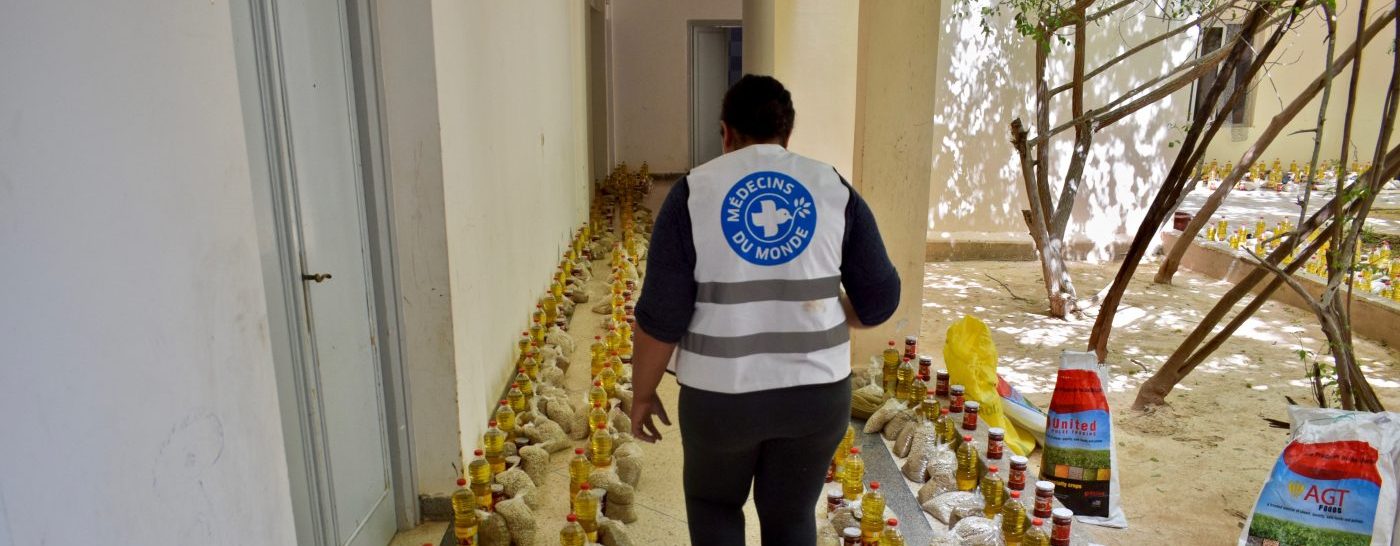A forest in Morocco
Published 25th January 2019
There is a forest in Morocco, extending between Tangier and Tetouan. Few people are aware of its existence. Like its oaks and cedars, the refugees and migrants that live among them also remain unseen.
In 2018, Doctors of the World received funding from the Migration Emergency Response Fund (MERF) to support a project for refugees and migrants in the area. We intervened to improve living conditions and access to basic services for the most vulnerable surviving in the forest and urban camps.
This meant distributing kits for the winter to prevent infectious and respiratory diseases and improving protection, providing medical care, shelter, and referrals to other organisations, for extremely vulnerable people. We scaled up our current work programme to make sure even the “invisible” could access healthcare.
Working to help over 8,000 people, Doctors of the World’s intervention focused on communities, empowerment, and systematic change to ensure long term success.
The power of community

“Migrant camps in Morocco have a very strong internal organization: several communities cohabit in the same space but in separate zones” reported the project manager.
Considering these social dynamics, our project involved community leaders from the very beginning to give a voice to all the population.
In the urban camps in Casablanca, Agadir and Tiznit, community leaders made it possible to work closely with those who needed us. Thanks to them, we could address the most important medical cases and ensure new and urgent cases were referred to our local partners.
Collaboration and partnership with migrants associations’ was also a very important: “diaspora” groups in Morocco are organizing well targeted activities and services for their co-nationals. Moreover, they are seen as a point of reference.
In Rabat, among other places, we coordinated with leaders and migrants’ associations to reach more migrants and increase the impact of our work at a time when many people were arriving due to push-backs in other parts of the country. Coordination was fundamental to improve living conditions in the emergency houses offering short-term shelter to unaccompanied minors, pregnant women, or injured people.
Needs and adaptation
Collaboration and contribution from the community was not only fundamental to identify the most urgent cases, but also to continuously improve and adapt the project to the needs of our patients.
The project manager told us that the distribution strategy for so-called “winterization kits” was highly improved by the input of the different community leaders. These kits were key to preventing infection, and respiratory diseases, and had to be distributed to the population in an effective way.
The community provided us with insight on how to better execute the distribution, participating actively in the final decision and the process itself. For example, in different places across Rabat, we considered a range of issues, such as the target group, the immediate need, the environment and the security of our team, to decide on the appropriate distribution method: door-to-door, individual distributions after sensitizations sessions, or collective distributions to groups.
Positive results

The MERF project in Morocco has made changes to the living conditions of many people, especially in the south where migrants living in very poor conditions.
People living in such temporary camps are very isolated and receive little to no assistance and our support helped them get basic items and services they needed without them having to take risks.
This cooperative strategy enabled us to provide over a thousand migrants with health consultations, screenings, and orientation towards public health services ensuring access to healthcare would be durable. We also opened 5 new emergency housing projects for specific categories of vulnerable migrants (unaccompanied minors, pregnant women, patients under treatment) and supported 6 others for women late in their pregnancy or with new-born babies.
The need for long term support
While this emergency project can be considered a success, the need for long-term support and a sustainable response remains.
A single intervention in a camp is not enough to significantly improve the health of people there. When we attend an operated leg fracture, the follow-ups are as important as the operation itself, and failure to carry them out can cause more and greater problems than the fracture itself.
The migrant population in Morocco needs structural and ongoing support. Some of our beneficiaries highlighted the need for a bigger, continuous programme:
“Do not come once a year, it is not necessary that things stop, do not forget us again, the need does not finish”
It is important that support for migrants stranded in Morocco continues, and that local healthcare systems are strengthened. Thanks to MERF, lots of work has been done, and we will continue striving to create community-lead, empowering, and sustainable access to healthcare. So that no one remains invisible.
